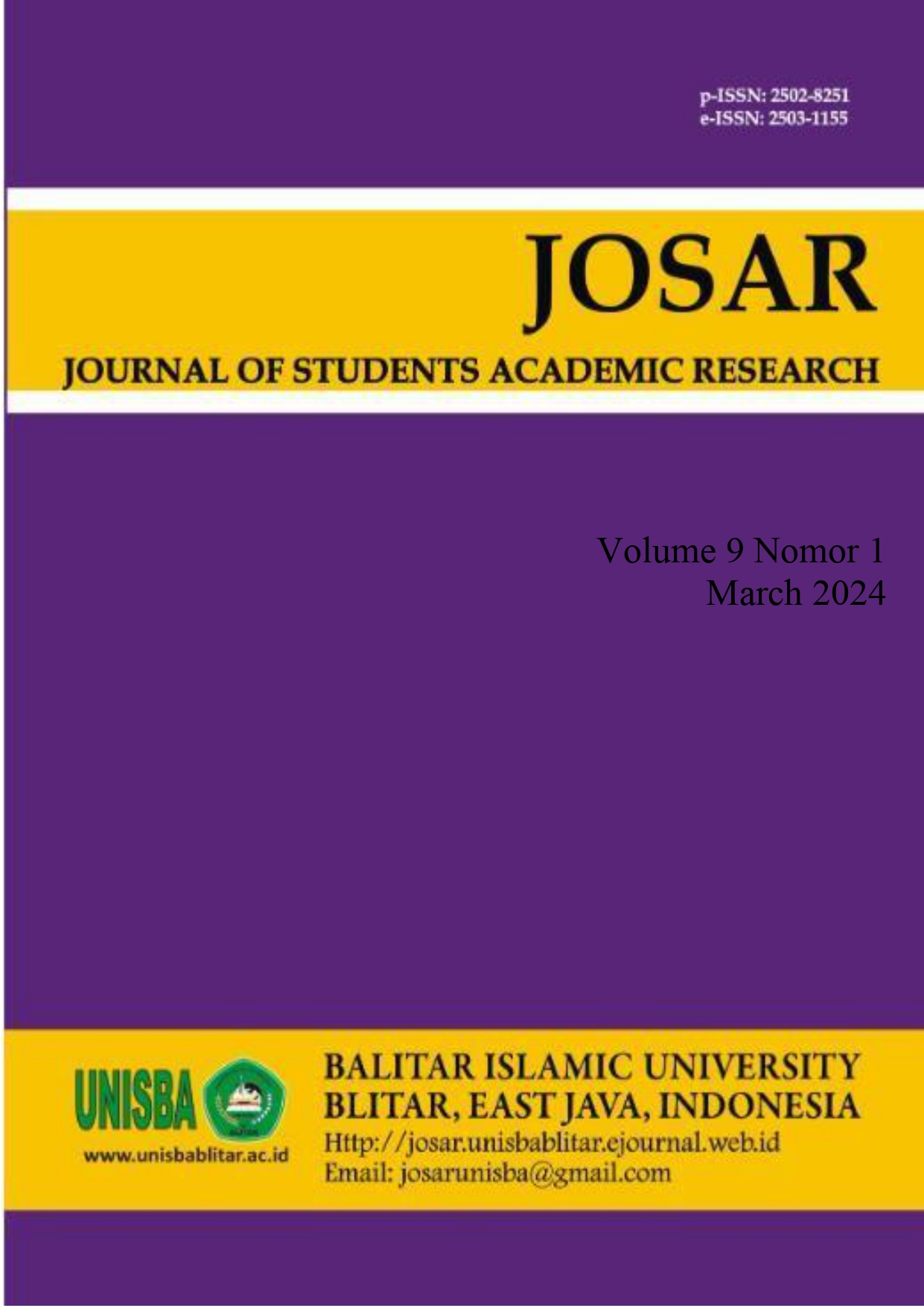Communication Patterns of Counselors with Counseling Patients at the Cilegon City National Narcotics Agency
DOI:
https://doi.org/10.35457/josar.v9i1.3351Keywords:
Communication Patterns, Counseling, Counselor, PatientAbstract
The research explains the communication patterns of counselors with counseling patients of the Cilegon City National Narcotics Agency, with the highest number of adolescent drug addicts in Banten province. The research used a descriptive qualitative approach with in- depth interview techniques to explore informant data. Counseling communication patterns between counselors and counseling patients are the object of research. The research informant selection technique uses purposive sampling or informant determination technique with certain considerations. The main informants in the research are counseling patients and counselors at BNNK Cilegon who are in charge of rehabilitating adolescent drug abuser patients. The results revealed that the counseling communication pattern at BNNK Cilegon is included in the circular pattern, the message interaction process takes place in two directions and the communicant actively conveys message feedback. Counselors apply a counseling technique called client-centered therapy which is based on the equality of counselors and patients, the counseling program at BNNK Cilegon is divided into interpersonal counseling sessions for counselors and patients, family support sessions, and group therapy. This research is expected to be able to provide an overview of interactive counseling communication patterns, as well as provide perceptions to embrace drug addicts to escape drug addiction.
References
Miya, K. (2021). Individual Counseling to Improve Self-Control of Drug Addicts at the House of Serenity Rehabilitation House Bandar Lampung. (Doctoral dissertation, UIN Raden Intan Lampung).
Pinem, R. P. (2019). Communication Strategy in Coaching Drug Addicts at the Bhayangkara Indonesia Narcotics Abuse Prevention Rehabilitation Institute (LRPPN) Medan City. Http://Repository.Umsu.Ac.Id/, 6(1), 5-10.
Downloads
Published
Issue
Section
License
Authors who publish in this journal agree to the following terms:
- Authors retain copyright and grant the journal right of first publication with the work simultaneously licensed under a Creative Commons Attribution License that allows others to share the work with an acknowledgment of the work's authorship and initial publication in this journal.
- Authors are able to enter into separate, additional contractual arrangements for the non-exclusive distribution of the journal's published version of the work (e.g., post it to an institutional repository or publish it in a book), with an acknowledgment of its initial publication in this journal.
- Authors are permitted and encouraged to post their work online (e.g., in institutional repositories or on their website) prior to and during the submission process, as it can lead to productive exchanges, as well as earlier and greater citation of published work (See The Effect of Open Access).
Deprecated: json_decode(): Passing null to parameter #1 ($json) of type string is deprecated in /home/ejournal.unisbablitar.ac.id/public_html/plugins/generic/citations/CitationsPlugin.php on line 68










